The Never-Ending Stories
Every once upon an Age, a story comes along that is timeless. Its content, lessons, and characters transcend time and location to reach the hearts and minds of generations of people. But then there is the ever-present possibility of degradation, when the message telegraphed so long ago becomes little more than a cosmic game of Telephone, and the joy once experienced in previous incarnations is forever lost to those in the far future. These are the Never-Ending Anime.
Gundam AGE

AKA My First Gundam
In the distant future, Earth has long since made peace with the colonies of space, and the far-reaching human colonization of space has finally resulted in a period of lasting peace. However, fourteen years ago, a mysterious foe, the UE (Unknown Enemy), suddenly appeared. Since then, this cruel yet mysterious enemy has destroyed space colonies, and routinely attacked other targets. Aboard the decimated space colony Ovan, Flit Asuno was given a family heirloom by his dying mother: the AGE Device memory unit that contained plans for a mobile suit. As it so happens, the Asuno family helped design and build the Gundams used during the bygone series, so Gundams are already in Flit’s blood. In the hope of protecting others from the tragedy that had befallen him, Flit began to develop this suit with the help of the Earth Federation on the space colony Nora. It is now the year A.G. (Advanced Generation) 115. When the UE suddenly attacks Nora, Flit must pilot the Gundam to fight against the UE, thus beginning the Asuno family’s century-long battle to protect humanity from the invaders.
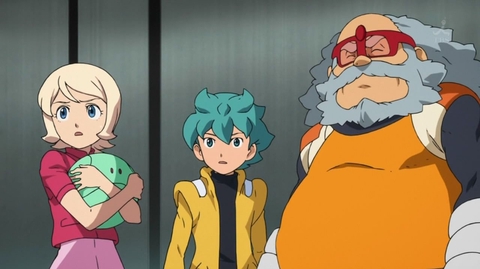
And the show's animators…
Bad habits die hard. For years and years, Sunrise made mountains of cash of off the Gundam franchise and its merchandise. Indeed, so ingrained is Gundam into the Japanese culture that there’s even a full-scale replica guarding a park in Odaiba (not to mention a Gundam theme park in Tokyo). The problem is the franchise became dull. Then it became repetitive. Then it became the Law & Order of anime. Instead of trying to move on and create the next big thing in anime, the studio became trapped by the franchise. After all, mecha has always been Sunrise’s bread and butter. Even the name Sunrise has been synonymous with Gundam for decades. But the money was too good to give up, so the studio did what any modern media company would: reboot. In an attempt to recapture some former glory and generate more merchandise sales, Sunrise produced Gundam 00, and it was actually rather good. Unfortunately, Sunrise pushed the envelope too far and created Gundam AGE. Remember your love, your hate, and all of your anger directed towards the Earth Federation and the Space Colonies? Consider it pointless, because this series takes place so far in the timeline that everything about the previous conflicts is irrelevant. That means no interstellar war, no dystopian Earth countries still fighting for resources, no emo pilots, no deep philosophical speeches on the futility of war and human advancement juxtaposed between high-budget fight sequences, and NO GUNDAMS. But it’s not all despair, as there is technically one Gundam in this series (named, of all things, “Gundam”). However, this is a mere tinker toy compared to its predecessors. This Gundam’s power lies in the AGE system, which is basically a giant 3D printer that can create a solution for whatever problem that comes its way. And what IS its problem? An unknown enemy called the Unknown Enemy, which is still the best name anyone could come up with after 14 years of conflict. This reveals the fundamental weakness of Gundam Age: it’s completely unoriginal. In fact, it’s so unoriginal that almost every level of production displays minimal effort, because even if this series flops, Sunrise will just crank out another one. The writing is lackluster, the characters are almost completely one-dimensional, and the story is downright contrived. This makes AGE feel even more vapid and episodic than previous shows could hope to match. Worse still is that this show strips away the key elements that made the franchise watchable in the first place. There’s not even a cool-looking robot to root for. The low-level robots from Big O could kick the crap out of this thing, assuming they can keep it away from that plot device of a 3D printer. If you want a good Gundam series to watch, I can recommend half a dozen shows are at least half a decade old. What good is it to produce a series that so drastically degrades your already aging brand?
The animation is, in a word, hideous. Many character designs are drastically misshapen and inconsistent throughout various episodes and scenes. There were multiple times when I thought I was watching Medabots (which, by the way, still retains a higher rating than AGE on ANN an entire 13 years later). The current Gundam features an oversimplified design that might have worked 23 years ago, but it is absolutely insulting compared to the designs experienced by viewers during Gundam 00, which was released 4 years ago and takes place centuries before this one. The action scenes are especially lackluster. It’s not difficult to know when Sunrise animators aren’t trying, and these fight sequences are strictly done on auto-pilot. So much for centuries of advancement in propulsion design or aerial combat. I hope you didn’t come here for the music, either. It’s trifling, even for Gundam standards. It doesn’t evoke emotion of any kind. If anything, it accentuates the mediocrity of every scene. When the music, animation, and storyline come together in this way, viewers can’t help but change the channel.
Mecha anime is not like fine wine. It does not age well over time, and neither does Gundam AGE. It is easily one of, if not THE worst series in the history of the franchise. You might want to kick this habit sooner than later, Sunrise. Otherwise, you’ll be joining Bandai in the death-spiral.
Inu X Boku Secret Service
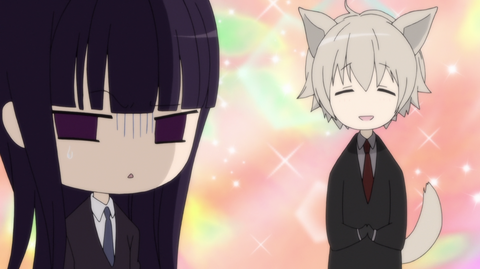
Do you really need to know much else?
Ririchiyo Shirakiin is a rich high-school girl who lives in the lap of luxury, but her life isn’t all it’s cracked up to be. She’s had a rough childhood, and she has become socially inept, pushing away those who try to get close with a well-placed verbal jab. Also, she’s a half-demon. As such, she’s come to live at the Maison de Ayakashi, a high-security living complex run and guarded by other half-demons, in order to improve herself. There she meets her secret service bodyguard Miketsukami, a dog half-demon. The only problem is that he is slavishly devoted to Ririchiyo, asking her for only one thing: “Please make me your dog.”
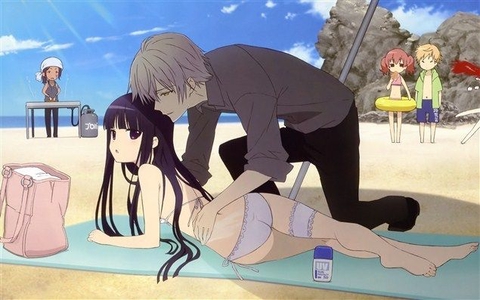
Now roll over.
Despite this week’s introduction, Inu x Boku is not a long series, nor has the manga been around for a long time. However, it has been included in this week’s theme because it certainly acts like a tired and worn out franchise. Sure it’s a romantic comedy aimed at young female audiences, but it also comes with the same fundamental flaw of most chick flicks: there’s nothing to it.
The show can be broken into two prospective areas of interest: the relationship between the main character Ririchiyo and her bodyguard Miketsukami and the supernatural intrigue of living and working inside the Maison de Ayakashi, the Mansion of Demons. Unfortunately, neither area is interesting. Ririchiyo is bitter and emotionally fragile, while Miketsukami is completely subservient. Normally there’d be a fair amount to talk about in that relationship, like the dangers of co-dependence or how each of them copes with being half-demons in the center of the human world. Instead, the viewer is greeted with a filler arc. How about the concept of living with other half demons in a lavish mansion, occasionally beset by full-fledged demons who wish to see it destroyed? Surely, these protectors would have some interesting tales of love, loss, and life to tell? Nope. Just episodic filler. Even the demons are either mindless morons or weak enough to comically thwart, but always cheap enough to be defeated in less than 1 episode. The biggest events in the entire show are a surprise party and a tea party. When a series is 12 episodes long, with less than 3 of any semblance of substance, then what is the point in making it a full television series at all? Why not a short OVA series or an extended movie? Fan service.
That said, Inu X Boku has very quality character designs and animation. Ririchiyo remains especially pleasing to look at, and is realistically proportionate enough for both the target female audience and males to admire. Even her fan service scenes are classy, far more than most of the recent shows in this genre. The other females in the series are either quiet and reserved or overly affectionate, which offsets the naturally brooding atmosphere of the Maison de Ayakashi. The males are as pretty as you’d ever find in a yaoi manga, without actually being yaoi. Unfortunately, the budget is likely spent on just the animation, because the music is often lacking, and the story kept to a bare minimum. Minetsukami is strong, protective, slavishly devoted, considerate, understanding, and even a bit dangerous. Yet he has no personality whatsoever.

Although it's debatable how dangerous…
While the series takes a far softer stance on fan service than its male-oriented counterparts, the result is equally offensive: attractive characters with nothing to say that are nice to look at but painful to hear speak. While the backgrounds are nothing to look at, Inu x Boku does make effective use of space and lighting, especially when it involves textures and moonlight. This combination often evokes a supernatural and lonely atmosphere that permeates the Mansion de Ayakashi. The background music nicely complements this, adding another element to the difficult and sullen mindset Ririchiyo clings to. Alas, given the show’s lack of focus, these effects are ultimately wasted.
The story’s only saving grace is Ririchiyo herself. She’s a nice girl, but also a lonely child whose hard-earned emotional defense mechanisms impede her search for happiness. Indeed, the only memorable moments are rare glimpses of her loveless childhood, and it’s when that trauma coincides with Miketsukami that he becomes interesting at all. So again, why do we care about anyone else in the cast, or that she lives in a boarding house of wealthy half-demons, or anything else besides Ririchiyo? The story should have been built around her, and it could have been done so very effectively. However, randomly placing her in a mansion with no expanding purpose with a bodyguard with no real personality ruins whatever potential the story once had. Inu x Boku Secret Service held some promise as a story of supernatural intrigue, romance, and self-growth, but it is ultimately derailed by filler, the classic pitfalls of fan service, and the overall genre. There’s just better series out there that do the same thing. Sorry, Minetsukami. Play dead.
The New Prince of Tennis
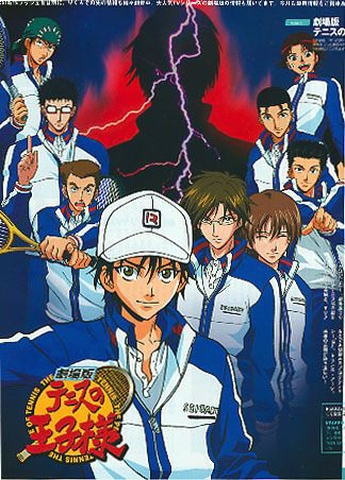
AKA Tennis Ball Z
Echizen Ryoma is a young tennis prodigy who has won 4 consecutive tennis championships but who constantly lies in the shadow of his father, a former pro tennis player. He joins the Seishun Gakuen junior high school, one of the best tennis schools in Japan. Along with his teammates, he learns to find his own type of tennis in an attempt to defeat his biggest obstacle of all: his father, as well as himself. Thanks to last year’s stellar performance, the Seigaku tennis club has been invited to train at the U-17 (Under 17) camp. Seigaku is one of the 50 middle schools invited and must compete with high school players to prove they are just as good. Of course, the best and brightest from the other top tennis schools show up and together, they effectively eliminate all other newcomers from the camp, middle and high-schoolers alike. This leaves only them, the incredible players already training at the camp, and the classy sociopaths running the training camp.
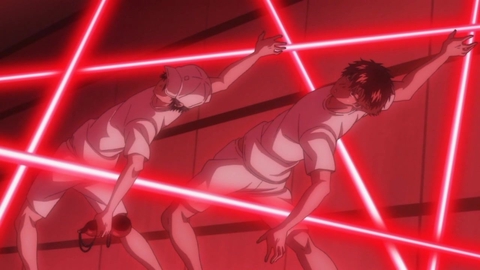
Or did they mean death camp?
Ah, this one takes me back, back to a simpler time when sports anime actually provided some entertainment value. A time when such trivialities like logic and storyline fell by the wayside, giving way to really, really pretty boys playing the most beta of sports. In fact, the Prince of Tennis franchise remains the only shonen series I can remember that girls actively followed (except Inuyasha). So when the time came to continue the story of Echizen Ryoma, J.C. Staff gave the people what they want: pretty boys, ridiculous tennis, and tournament-style fighting, all under the thin guise of sports. The Prince of Tennis occupies a rather unique position in the world of Shonen anime, not outlandish and/or supernatural like most, and not quite mundane like most Sports amine. No, this series has high-school characters that for the most part take themselves seriously (though to an extent) while dealing with some decidedly strange tennis techniques. The latter part seems to take the edge off an otherwise melodramatic sporting show, and the matches really are interesting. That said, there’s not much of a storyline here, aside from the standard tournament format, which basically forces everything along. As for character development, don’t expect much. After all, this series is still part Shonen, which means character development is directly proportional to playing time. Ironically, development is undercut because the story isn’t Shonen enough, falling prey to the same fundamental weaknesses of most Sports anime. More specifically, it means that the story refuses to end. That’s the problem with basing stories on the life and times of a single character, and it’s unlikely that he’s going to die from a tennis ball injury (then again, protagonists from Knight in the Area died from a simple bump on the head, so you never know).
The New Prince of Tennis likely wouldn’t be where it is today without its animation style, and it certainly doesn’t disappoint. The budget J.C. Staff allocated for this show is above average, so the action scenes minimize the use of cliché techniques, such as pans and stills. Since the playing styles of the new characters are even sillier than what has already been seen, the character interactions and animations are surprisingly well done. Though to be fair, there’s relatively little to animate in each frame, since this is a turn-based game, after all.
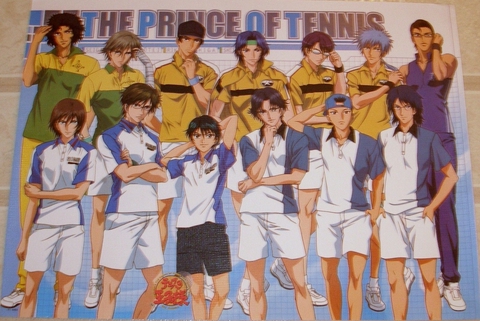
And there’s only so many ways to animate Pretty Boys.
The music is standard fare for Sports and Shonen anime: generic rock BGM meant to excite the audience for certain scenes. It follows the formula very closely. Still, the music is done decently, and it succeeds in rallying the viewer through the end of the match. While the show itself isn’t particularly memorable, the state of everything else in the Sports and Shonen genres make The New Prince of Tennis more immediately recognizable and refreshingly entertaining. The New Prince of Tennis probably won’t sate the needs of frequent Shonen viewers, but if you’re a Sports anime buff, then this series should not only appeal to you, but give you a small window into the world of your Shonen counterpart.
Join me next time, as I order some comfort food for a good old-fashioned guys’ night in.